Jun. 28, 2021
Cooking In Season
Salad Meals to Beat the Heat
In this recipe round up, I have gathered my best and most delicious summer salad meal recipes in one post, for days when it’s too hot to cook!
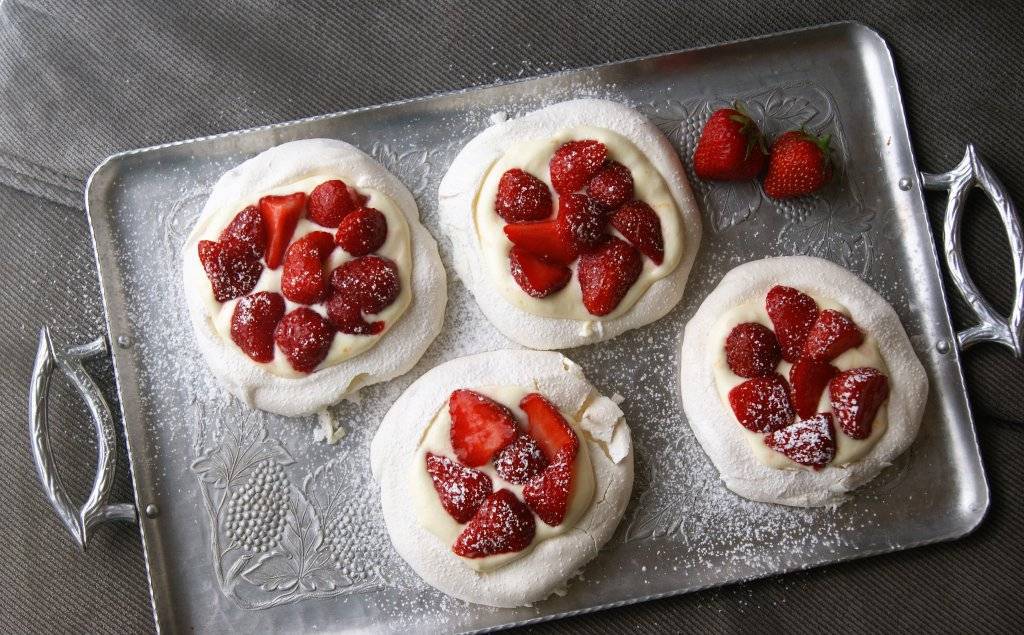
Besides, the photos speak for themselves.
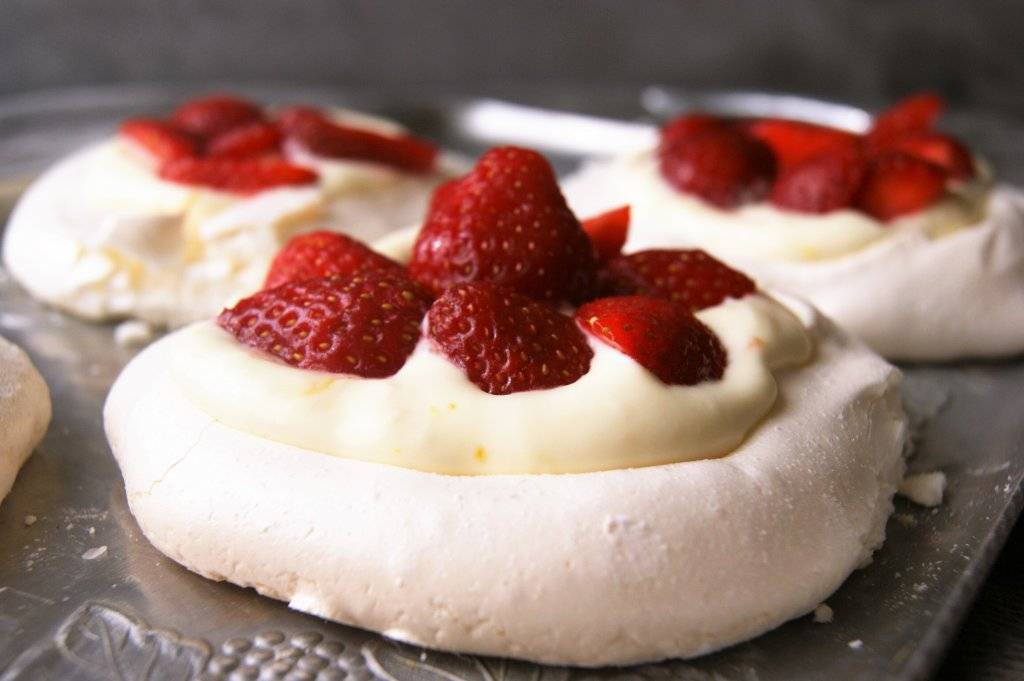
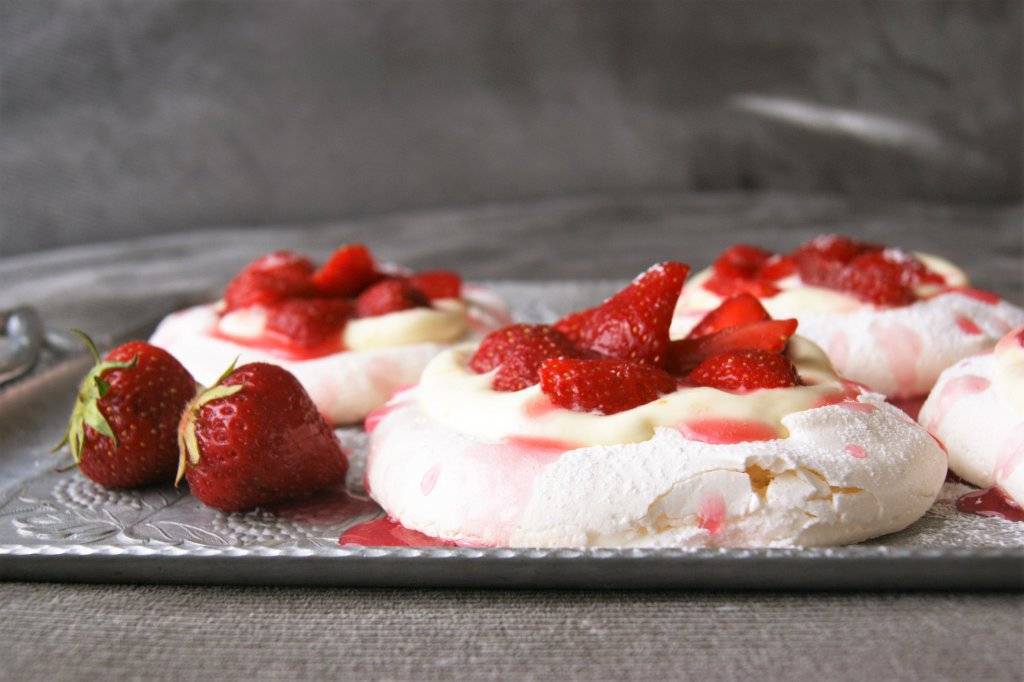
Pavlova is a perfect spring dessert. Light, airy, sweet, fruity – the crisp meringue melting on the tongue while the lemony cream lingers in the mouth, and the strawberries perk everything up.
Pavlova is great for entertaining and/or for eating all week: meringue can be made in advance, lemon cream can be made in advance, and everything assembled just before serving.
After having made this several times in the last two weeks (just to make absolutely sure the recipe was perfect, you understand) I can say for certain that the meringues and lemon cream both last at least a week. IF you hide them from other members of your family.
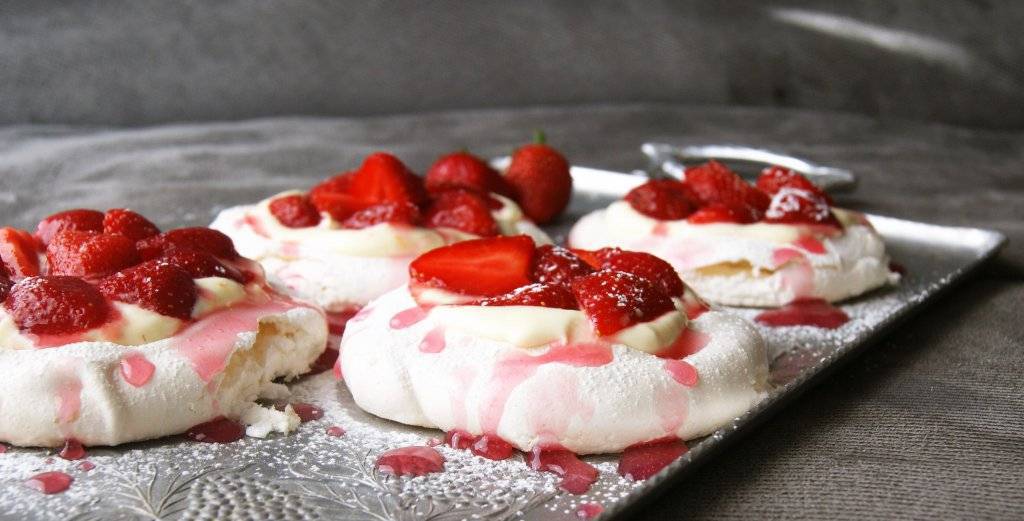
Strawberry Pavlova with Meyer Lemon Cream
serves 8
A perfect spring dessert: airy meringue, lemony cream, and sweet local strawberries. The lemon cream can be made with regular lemons if no Meyer lemons are to be found, but reduce the lemon juice to 1/3 cup total (Meyer lemons are less tart than regular lemons). Other fruit can be substituted for the strawberries: nectarine, peach, golden kiwi, raspberry, blueberry. . .
The rhubarb syrup is an optional addition, but very, very good.
An additional advantage to pavlova is that it is gluten free!
Meringue
4 egg whites*
1/2 tsp cream of tartar
1 cup granulated sugar
1/2 tsp vanilla extract
Meyer Lemon Cream
1/2 cup unsalted butter
pinch salt
1 cup granulated sugar
1 Tb finely grated zest of Meyer lemon
1/4 cup freshly squeezed juice of Meyer lemon
1/4 cup freshly squeezed juice of lemon
4 egg yolks
2/3 cup whipping cream or solid coconut milk
Berries
1 pint fresh local strawberries
Rhubarb Syrup (optional)
3/4 cup chopped fresh or frozen rhubarb
1-1/2 cups water
sugar to taste (start with 1/2 cup)
*egg whites must be absolutely free of any trace of yolk or grease of any kind. If they are not completely fat-free, they will not hold enough volume while being whipped. Make sure your yolks don’t break while you are separating your eggs, and make sure that you bowl and beaters are scrupulously clean.
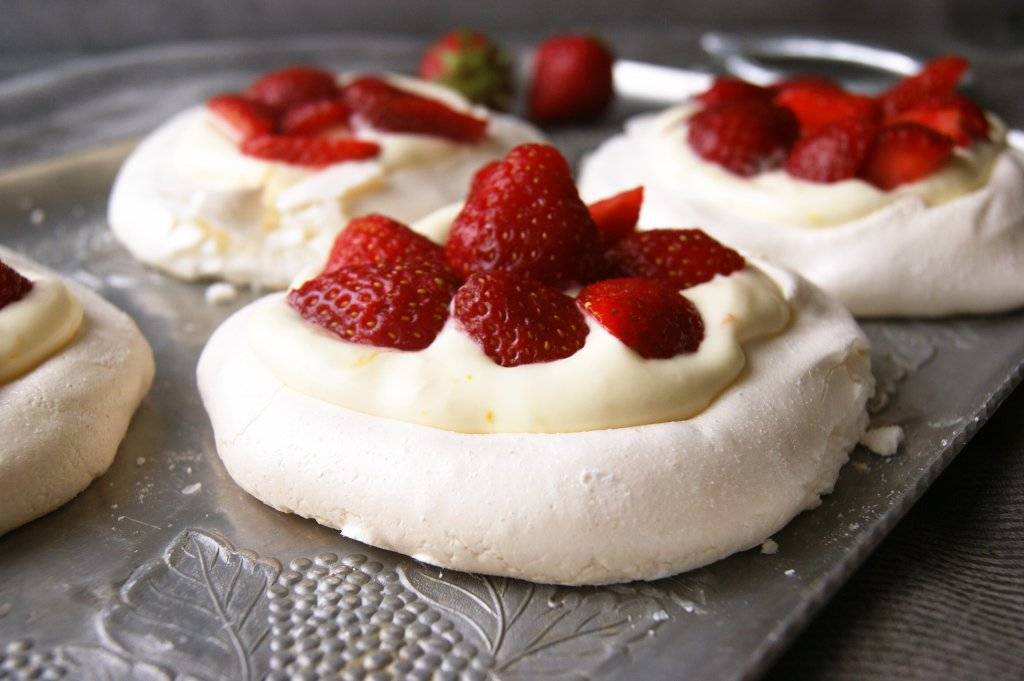
Meringue instructions:
Preheat oven to 250 F. Cover a large baking sheet with parchment paper and sprinkle the parchment paper with a light dusting of cornstarch or tapioca starch (this is to help the meringues come off the paper after they are cooked).
Place egg whites in the bowl of a standing mixer fitted with the whip attachment (alternatively, whip eggs with a hand-held electric beaters, or with a large balloon whisk). Add cream of tartar and whip on low or medium low until foamy. Increase speed to medium-high and whip until very soft peaks form (this happens quickly – keep an eye out!). Now, while machine is running, slowly (but not too slowly) pour in the sugar along the side of the bowl, beating all the while. Keep beating until egg whites have increased at least 5 times in volume, are smooth and glossy, and hold very stiff peaks, about 3 minutes (dip beater in the whites and turn upside down – the peak should hold itself upright like a witch’s hat).
VERY IMPORTANT NOTE: WARNING AGAINST OVER-BEATING: it is much more common, in these days of electric mixers, for cooks to *over-beat* their egg whites, rather than under-beat them. Over-beaten eggs will not hold their volume. They will create, at best, a low profile meringue or cake, and at worst, collapse and separate. Over-beaten egg whites lose their gloss and start to appear grainy. They have started to lose their structure and elasticity. If you are at all unsure, it is much better to slightly under-beat your meringue, rather than slightly-over beat it. Trust me on this one.
Gently fold in the vanilla extract with a spatula until evenly blended. Next, place 6 to 8 large spoonfuls of meringue on the prepared baking sheet and use the back of a large spoon to gently form them (without deflating the whites) into small nest shapes. The hollow in the middle of the nests will ultimately be holing the cream and berries. Keep in mind as you are forming the meringues that they will not alter shape in any way while they are cooking.
Place in the preheated oven and bake for about 1 hour. Turn the oven off and leave the meringues
in there without opening the oven for at least two more hours (to fully dry out). NOTE: I often make the meringues at night, and leave them to cool in the oven overnight.
Lemon Cream instructions:
Fill a medium pot about 1/3 of the way with water. Bring to a boil, reduce heat to a bare simmer and place a medium bowl directly over the pot. This is a make-shift double boiler.
Put the butter in this bowl and melt. Add the sugar, Meyer lemon zest, and both types of lemon juice. Stir until sugar dissolves.
In a separate bowl, beat the eggs yolks until frothy. Slowly pour in about ¼ cup of the lemon mixture, whisking all the while. This helps temper the yolks and keep them from curdling when they are added to the whole mixture.
Slowly pour in the egg yolk mixture into the bowl with the remaining lemon mixture, whisking the whole time. (The bowl should still be over the hot water). Cook, stirring constantly, about 5 to 8 minutes, until mixture is thick enough to coat the back of a spoon. Congrats! You have just made Meyer lemon curd!
Remove the bowl from heat and let the mixture cool completely. Refrigerate until cold. When you are ready to finish the filling, scoop HALF of this lemon mixture (Meyer lemon curd) into a bowl. Refrigerate the remaining half for another use.
In a separate bowl, whip cream until medium-stiff peaks form. Gently fold the whipped cream into the HALF of the lemon curd that is in a bowl. (If using coconut milk, please use only the solid stuff at the top of the can.) Refrigerate filling until cold and thickened. It should be as cold and thick as possible when serving the pavlova.
Berries:
Gently rinse the strawberries in cold water. Gently pat them dry. Remove stems and hulls. Cut berries in halves or quarters, depending on size. Set aside until ready to assemble.
Rhubarb Syrup instructions (optional):
Combine Rhubarb and water in a small pot and bring to a boil. Reduce heat and simmer gently for 5 to 8 minutes, until rhubarb is very soft. Strain rhubarb mixture through a fine sieve, catching all of the liquid in a bowl, and discarding the rhubarb in the strainer (or save for another use). You will have about 3/4 cup of liquid at this point.
Place liquid back in the pot and add the sugar. Stir until dissolved. Taste for sweetness. If you want it to be sweeter, add a bit more sugar. Bring mixture to a boil and boil vigorously for about 3 minutes, until slightly thickened and reduced. Remove from heat and let cool completely before using.
Pavlova Assembly:
Place a meringue on a plate, fill the hollow in the center with some lemon cream (several tablespoons), top with some strawberries. This is not an exact science: use as much filling and berries as you can get away with before they start to spill over the edge of the meringue. Repeat with remaining meringues.
Garnish with powdered sugar and and a drizzle of rhubarb syrup, if desired.
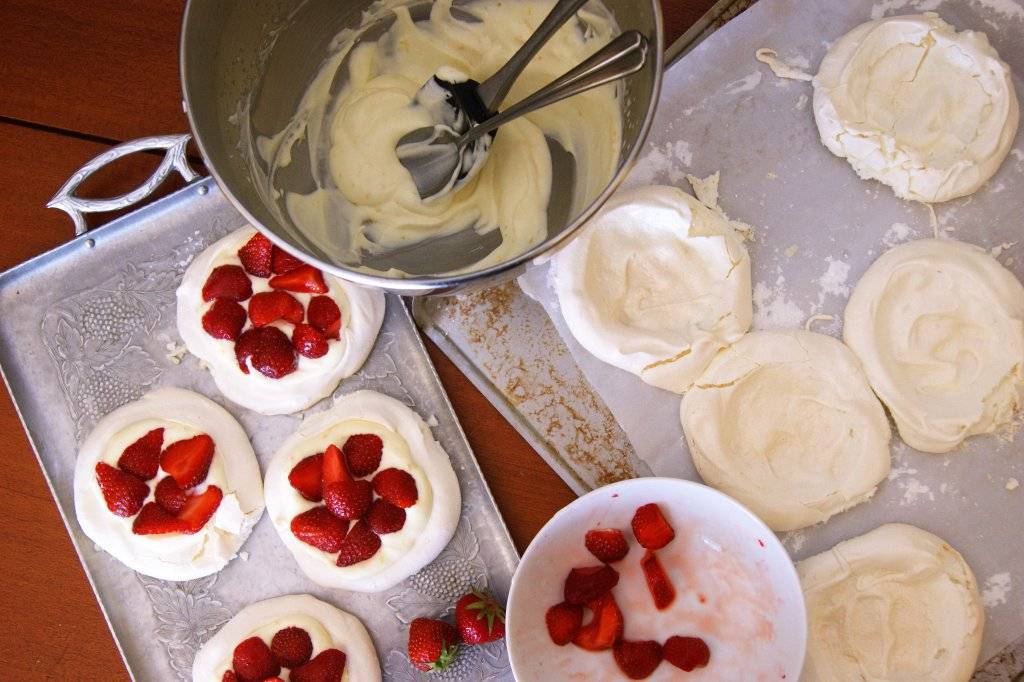
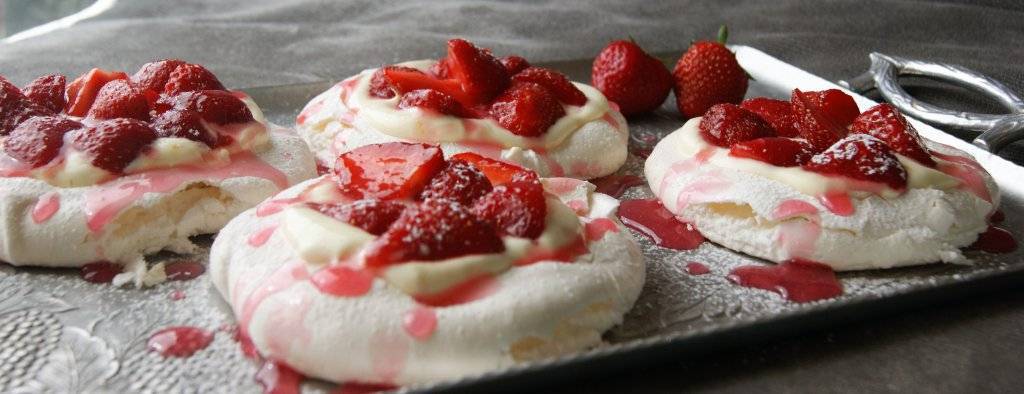
Jun. 28, 2021
In this recipe round up, I have gathered my best and most delicious summer salad meal recipes in one post, for days when it’s too hot to cook!
Oct. 25, 2020
Quince have a wonderful flavour, but an almost impossibly hard texture. Read on for a quick kitchen tip that makes quince easy to peel and cut!
Sep. 27, 2020
Pumpkin spices scones are a perfect fall treat; not-too-sweet, fragrant with spices, with a full complement of rich pumpkin flavour.
Notifications
Amazing recipes. Heidi..I can hardly wait to try all three–thanks so very much!!!